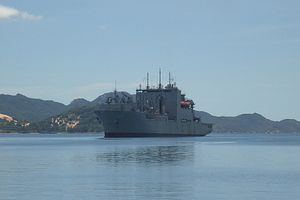In a historic move, U.S. President Barack Obama announced Monday that Washington is fully lifting a decades-old embargo on the sale of arms to Vietnam during his first visit to the Southeast Asian country.
As I had reported previously, U.S. and Vietnamese officials had suggested in the weeks leading up to the three-day trip that the move was in the works to boost ties between the two comprehensive partners (See: “Exclusive: US May Lift Vietnam Arms Embargo for Obama Visit”).
But even during briefings to journalists just before Obama’s departure late last week, officials refused to publicly confirm that a lift would occur on the trip, even though sources said that the move was likely. Rights groups and activists, meanwhile, had warned that a full lift would fail to hold Hanoi accountable for rights abuses.
On Monday, Obama finally confirmed at a news conference in Hanoi with Vietnamese President Tran Dai Quang that Washington was indeed fully lifting the ban.
“The United States is fully lifting the ban on the sale of military equipment to Vietnam that has been in place for some 50 years,” Obama said.
The significance of the move – which I outlined in a separate piece ahead of the visit – is clear (See: “The Case for Lifting the US Vietnam Arms Embargo”). It marks another positive step in the development of defense ties between the two countries, which have warmed over the past few years in part due to China’s rising assertiveness in the South China Sea disputes which Hanoi is a party to. Though any sale of equipment to Vietnam would still have to meet strict requirements – including those related to human rights – it does remove what Obama termed a “lingering vestige of the Cold War” and gives Washington more latitude to provide Hanoi with weapons for its defense.
Obama had arrived in Hanoi late Sunday, becoming the third sitting U.S. president to visit Vietnam since the end of the Vietnam War more than four decades ago. In his remarks, he said the full lifting was in line with the two-decade old normalization process between the United States and Vietnam, and that the change will ensure Hanoi “has access to the equipment it needs to defend itself.” Vietnamese officials have long argued that the step would be a sign that the bilateral relationship was fully normalized.
That said, as I have pointed out previously, despite the lifting of the ban, major defense contracts and transfers could take some time to be finalized because they are contingent on other factors, including growing Vietnam’s familiarization with U.S. procurement procedures relative to its other traditional defense partners like Russia. However, both sides have made efforts in recent months to bridge the gap on that front.
After three days in Vietnam, Obama heads to Japan for a summit of the Group of Seven (G-7) industrialized nations as well as a visit to Hiroshima, where he will be the first sitting president to visit the site of the first atomic bomb attack.
































